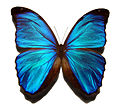a37a6da832d0... jpg
(77.97 KB, 500x700)
640px-Burney_... jpg
(144.84 KB, 640x855)
moloch jpg
(72.54 KB, 294x330)
https://en.wikipedia.org/wiki/Ishtar_Gate
"was the eighth gate to the inner city of Babylon.It was constructed in about 575 BCE by order of King Nebuchadnezzar II on the north side of the city....It was excavated in the early 20th century, and a reconstruction using original bricks, completed in 1930, is now shown in Berlin's Pergamon Museum. Other panels are in many other museums around the world."
"King Nebuchadnezzar II reigned 604–562 BCE, the peak of the Neo-Babylonian Empire. He is known as the biblical conqueror who captured Jerusalem. King Nebuchadnezzar II ordered the construction of the gate and dedicated it to the Babylonian goddess Ishtar. The gate was constructed using glazed brick with alternating rows of bas-relief mušḫuššu (dragons), aurochs (bulls), and lions, symbolizing the gods Marduk, Adad, and Ishtar respectively."
"Through the gate ran the Processional Way, which was lined with walls showing about 120 lions, bulls, dragons, and flowers on yellow and black glazed bricks, symbolizing the goddess Ishtar. The gate itself depicted only gods and goddesses. These included Ishtar, Adad, and Marduk."
"Marduk, the national deity and chief god, is depicted as a dragon with a snake-like head and tail, a scaled body of a lion, and powerful talons for back feet. Marduk was seen as the divine champion of good against evil, and the incantations of the Babylonians often sought his protection."
"The second god shown in the pattern of reliefs on the Ishtar Gate is Adad (also known as Ishkur), whose sacred animal was the aurochs, a now-extinct ancestor of cattle. Adad had power over destructive storms and beneficial rain. The design of the Ishtar gate also includes linear borders and patterns of rosettes, often seen as symbols of fertility."
